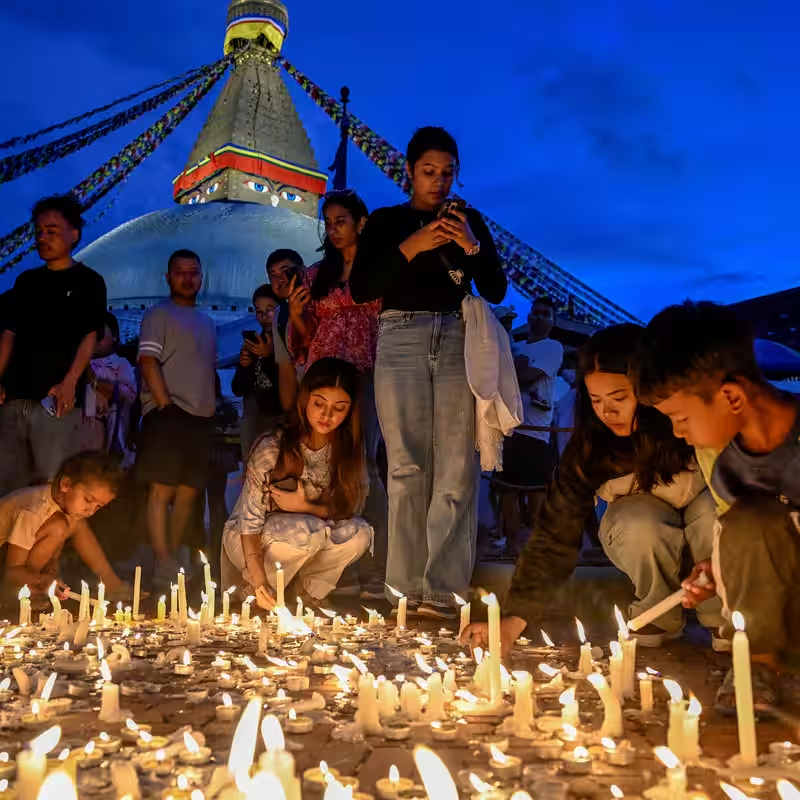What began as a peaceful rally against corruption and a social media ban in Nepal quickly spiraled into a nationwide uprising—complete with arson, deadly clashes, and the collapse of the government. At the heart of it all: Nepal’s Gen Z, who say they never asked for a revolution, let alone one drenched in blood.
Table of Contents
- The Origins of Nepal’s Gen Z Movement
- From Peaceful March to Nationwide Chaos
- Key Figures in the Uprising
- How the Government Fell in 48 Hours
- The Aftermath: Hope, Trauma, and Uncertainty
- Timeline of the Nepal Gen Z Uprising
- Sources
The Origins of Nepal’s Gen Z Revolution
In early September 2025, a group of young Nepali activists—mostly in their late teens and early 20s—planned a modest protest in Kathmandu. Their demands were clear: end systemic corruption, stop favoritism toward “nepo kids” (children of the political elite), and lift the government’s sudden ban on social media platforms.
Organizers like Tanuja Pandey, a 25-year-old lawyer and environmental advocate, expected a few hundred attendees. Instead, tens of thousands flooded the streets on September 8, many dancing, chanting, and taking selfies—symbols of a generation fluent in digital activism but new to street protest.
From Peaceful March to Nationwide Chaos
The mood shifted rapidly. By midday, older men on motorcycles—many unaffiliated with the original organizers—joined the crowd. Some carried pickaxes. Others waved national flags, violating the protest’s nonpartisan code.
Near Parliament, security forces—initially absent—suddenly opened fire. At least 19 people were killed, including students in school uniforms. Among the dead was Dipendra Basnet, a 28-year-old electrician preparing to work abroad to support his family.
“We wanted reform, not a revolution,” Pandey later said. “I don’t know what happened, but the whole thing was hijacked.”
Key Figures in the Uprising
| Name | Role | Fate |
|---|---|---|
| Tanuja Pandey | Lead organizer, Gen Z activist | Survived; now in hiding |
| Misan Rai | 18-year-old protester | Escaped gunfire; continues activism |
| Dipendra Basnet | Protester from rural Nepal | Shot in head; critically injured |
| Mahesh Budhathoki | 22-year-old soccer fan | Killed by police gunfire |
| Sudan Gurung | Millennial leader of Hami Nepal | Became de facto Gen Z representative |
How the Government Collapsed in 48 Hours
By September 9, Kathmandu was burning. Mobs torched Parliament, the Supreme Court, and the century-old Singha Durbar government complex. Police stations were overrun; officers were beaten or thrown from balconies. The military, ordered to stay in barracks, only intervened after the capital was in ruins.
Prime Minister K.P. Sharma Oli resigned, and the entire cabinet was helicoptered to a military compound. Within days, former Chief Justice Sushila Karki—overwhelmingly chosen by Gen Z voters on Discord—was sworn in as Nepal’s first female prime minister.
But the transition raised eyebrows: Karki’s name had been floated by Army Chief Gen. Ashok Raj Sigdel before it trended online, suggesting behind-the-scenes orchestration.
The Aftermath: Hope, Trauma, and Uncertainty
Today, Nepal is under a caretaker government with elections scheduled for March 2026. The slain protesters have been declared “martyrs,” and a commission is investigating their deaths.
Yet many original Gen Z organizers feel sidelined. Sudan Gurung, a 36-year-old millennial with ties to monarchist groups, now speaks for the movement—despite not being part of the initial protest.
“We are Gen Z, but we’re just doing the dirty work of the old men,” said one 19-year-old protester, clutching a still-hot bullet casing.
For now, Nepal’s youth are left asking: Was this uprising truly theirs? And will anything really change?
Timeline of the Nepal Gen Z Revolution
- Sept 8: Peaceful anti-corruption rally in Kathmandu draws tens of thousands.
- Sept 8 (afternoon): Security forces open fire; 19 killed.
- Sept 9: Nationwide arson; government buildings burned; PM resigns.
- Sept 10: Army takes control; Gen Z leaders summoned to military HQ.
- Sept 13: Sushila Karki sworn in as interim prime minister.
- Oct 9 (planned): Mysterious call for new protest sparks debate among youth groups.




